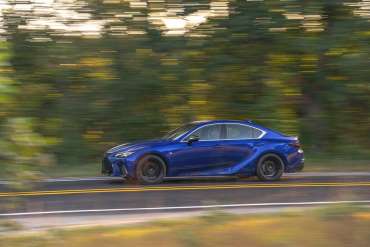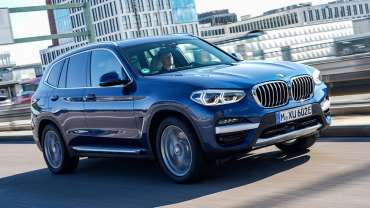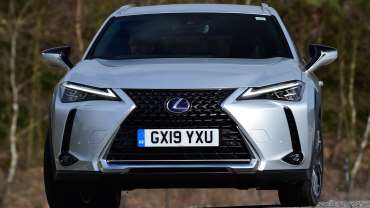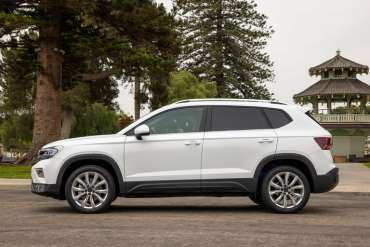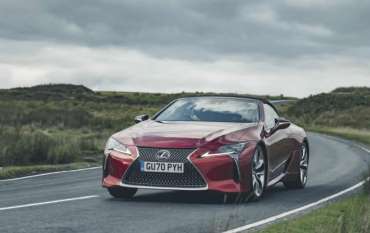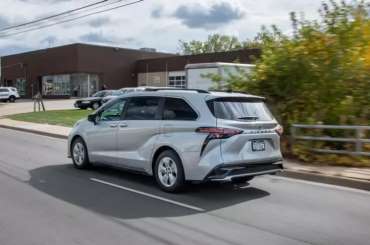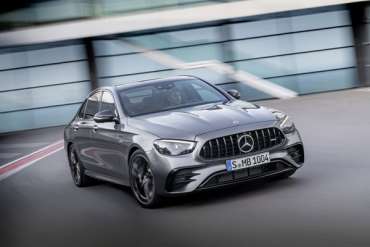
Worldcarblog.com
Tested: 2021 Lexus IS350 F Sport Deserves a Better Engine
Lexus's updated IS350 F Sport has the looks to kill but it doesn't deliver sufficient thrills.
Sedans are dead, at least that's the conventional wisdom. The trend toward crossovers has seemingly placed four-door cars on death row, but while they're down, they're not out of appeals. New sports sedans are still being introduced. Lexus's updated 2021 IS350 F Sport is just such a sedan, but is it good enough to find enough buyers to save itself from the gallows?
First introduced for the 2014 model year, the third-generation Lexus IS has been reformed by a second mid-cycle refresh in an attempt to keep up with newer offerings like the BMW 3-series, Cadillac CT4-V, Genesis G70, and the still lovely Mercedes-Benz C-class. Designers went to work on the sheetmetal with a smoothed-out profile, squinty headlights, and following the trend, an even larger grille. It's a killer-looking sedan, especially when dressed in the IS350's standard F Sport garb and blacked-out trim.
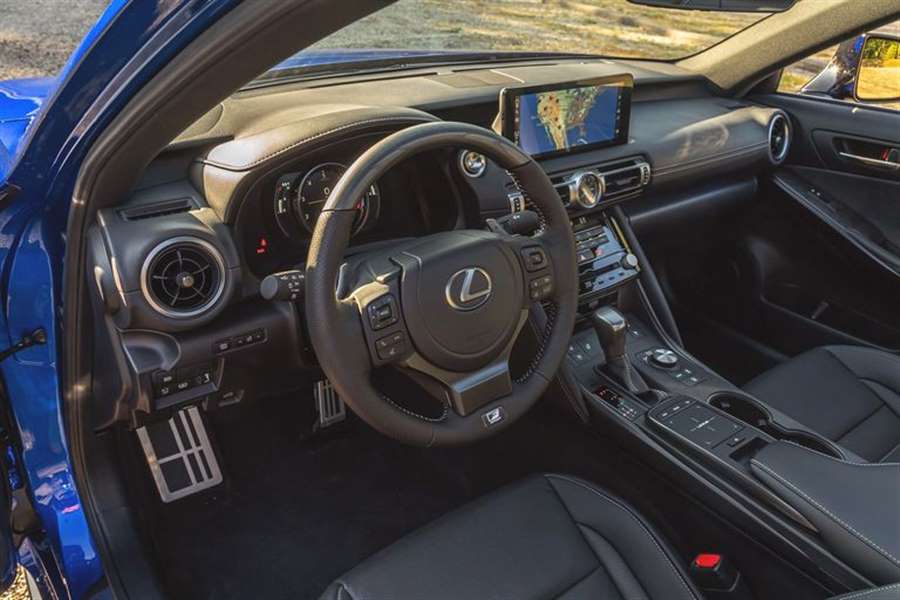
HIGHS: Stunning curb appeal, tasteful interior, comfortable seats.
While the IS's looks will please your optic nerve, the segment is one that emphasizes performance. Beneath the hood of the rear-wheel-drive IS350 F Sport is Lexus's familiar 3.5-liter V-6 producing a naturally aspirated 311 horsepower and 280 pound-feet of torque. Against turbocharged fours and sixes, the V-6 seems a step behind the times. The engine lacks the low-rpm shove that comes from most turbocharged mills, and the eight-speed automatic delivers lackadaisical shifts. Acceleration to 60 mph takes 5.6 seconds, and the quarter-mile is gone in 14.2 seconds at 100 mph. While those numbers would have been good a decade ago, today the IS350 F Sport finds itself competitive with the base turbocharged inline-fours offered in its class. For a sedan with such seductive looks, it deserves an updated V-6 with more power.
In an effort to improve handling, Lexus has also retuned the chassis. There are additional welds in the unibody to strengthen the structure, aluminum control arms replace steel ones, springs and anti-roll bars have been lightened, and a switch to lug bolts instead of nuts saves two pounds. Our test car arrived with the $4200 Dynamic Handling package that includes lightweight 19-inch BBS wheels that shave a claimed 16 pounds, adaptive dampers, and a Torsen limited-slip rear differential.
LOWS: A naturally aspirated V-6 in a world gone turbo, chassis shows promise but is held back by an overly vigilant stability control system.
All of the changes sound great on paper, but on the street there's still some structural flimsiness and the steering isn't as precise as the CT4-V's or the G70's. Lexus fits Bridgestone Potenza S001L summer rubber that seems tuned more for comfort than all-out grip. There's also the matter of a stability-control system that reactivates itself above 30 mph. This car's 0.89 g of stick on the skidpad is far from noteworthy. A Camry TRD outgrips the IS350 on the skidpad. Standing on the left pedal at 70 mph stops the IS350 in a competitive 155 feet, but the force of the stop seemed to trigger a low-oil pressure alert. This isn't something we've experienced with this engine before, so it may be a pre-production bug.
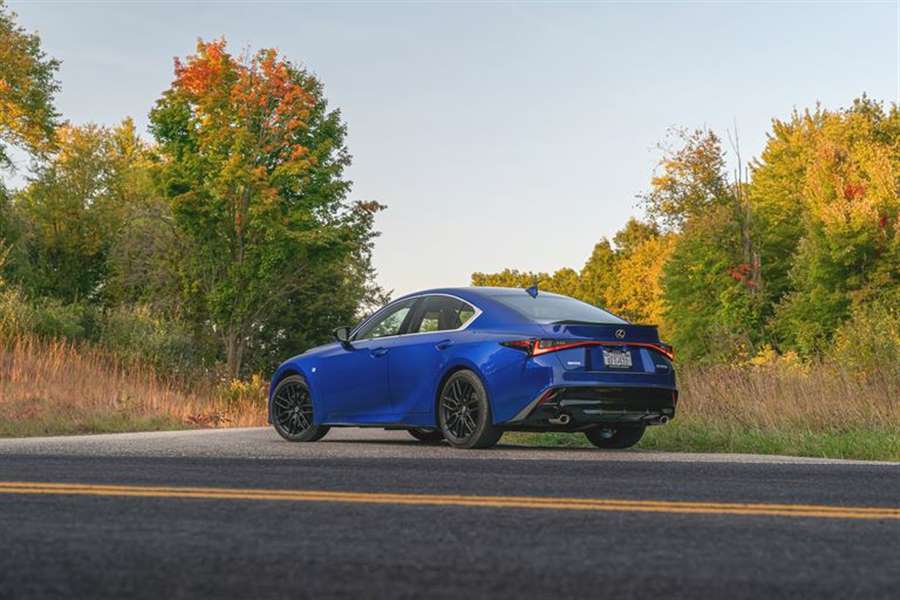
We found few problems with the tastefully appointed cabin. Supple leather and wood trim dress up the revised dashboard. The seating position and comfort of the bucket seats is spot on, but our enthusiasm wanes when we start using the infotainment system's touchpad. Though Lexus remains dedicated to fitting the haptic pad to operate the infotainment system, it's easily avoided by using the standard 8.0-inch or optional 10.3-inch touchscreen. Mounted nearly six inches closer than before, they're an easy tap away. Technophiles will find solace now that Amazon Alexa, Android Auto, and Apple CarPlay compatibility are standard.
The good news for IS350 buyers, is that its $43,925 starting price is $2475 less than last year's IS350 F Sport. A looker inside and out, the low-stress V-6 could definitely use more muscle and the handling could be more engaging and fun. Add in our car's as-tested $55,200 price, and we were in a less forgiving mood. A new engine would go a long way toward helping the IS sedan stay off death row.
Source: caranddriver.com
2020 BMW X3 xDrive30e First Test: Worth Every Penny?
Not the fastest or most efficient, but its cost could pencil out.
Usually when you face a choice between a conventional gas or plug-in hybrid SUV or car, the PHEV struggles to save enough fuel to offset the cost of the battery, motor, and all that extra copper. For some drivers, the BMW X3 xDrive30e might just pencil out. But will it kill your soul while doing so?
How The BMW X3 XDrive30e Plug-In Hybrid SUV Can Pay For Itself
Changing the "i" at the end of that model designation to an "e" costs $4,600. For that, you get a 107-hp/77-lb-ft electric motor sandwiched between your engine and transmission, which boosts the 2.0-liter turbocharged I-4 engine's output to 288 hp and 310 lb-ft. (In the xDrive30i it makes 248 hp and 258 lb-ft.) You also get a hefty 12-kWh battery pack capable of propelling the X3 on battery power alone for an EPA-rated 17 miles. When driving in that mode, the EPA rates it at an impressive 59/61/60 mpg-e on its city/highway/combined cycles, but the added weight of all this equipment (782 pounds on our scales) means that when that battery gets depleted, it gets the same fuel economy as the six-cylinder X3 M40i (21/27/24 mpg).
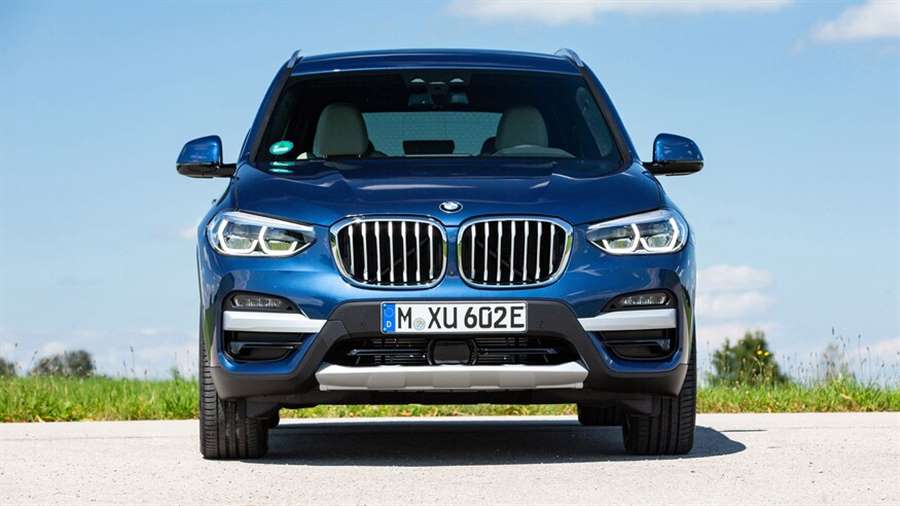
Here's how you can make the X3 xDrive30e pencil out in terms of fuel costs alone, using the five-year, 15,000-miles-per-year (41 per day) ownership model our partners at IntelliChoice developed. First, you need to plug in every night and drive at least 17 electric miles every day. Doing that, using national average costs for electricity and premium fuel of 13.19 cents/kWh and $3.08/gallon, the 17 daily miles add up to $2,292 over five years, and the remaining 24 miles/day will cost $5,808, for a total of $8,100—$783 less than IntelliChoice's $8,883 fuel cost for the X3 xDrive30i, and nowhere near our $4,600 target. But suppose you commute 17 miles each way to a generous, planet-loving employer offering free EV charging*? Now 34 miles per weekday (plus 17 daily miles on the weekends) costs your household that same $2,292, while the remaining 4,392 miles are gas only, costing $2,900, for a total of $5,192—a fuel savings of $3,691 relative to the xDrive30i. That's 80 percent of the cost difference. Drive it another year or two and you're there—less, if IntelliChoice finds the depreciation to be less for the PHEV model (full cost of ownership data is incomplete for this model).
This electrified SUV is "massive," but it's a low, road-hugging, rear-biased (43/57 front/rear percent) mass. The added electrification nearly maintains the xDrive30i's weight-to-power ratio (17.4 lb/hp versus the gasser's 17.1), but because of the electric motor's strong low-end torque (its peak lasts from 0-3,170 rpm), it accelerates considerably quicker. The 60-mph dash takes just 5.4 seconds en route to a 14.5-second, 98.1-mph quarter mile. That roughly lands the xDrive30e neatly between the non-electrified four and six-cylinder X3s. The xDrive30i's stats are 6.3 seconds and 14.8 at 92.6; the M40i's are 4.8 and 13.4 at 103.7. This result is particularly remarkable given that the hybrid's GA8P75HZ transmission features unique gearing that pencils out slightly taller (more efficiency minded) than the shared gearing of the gas models.
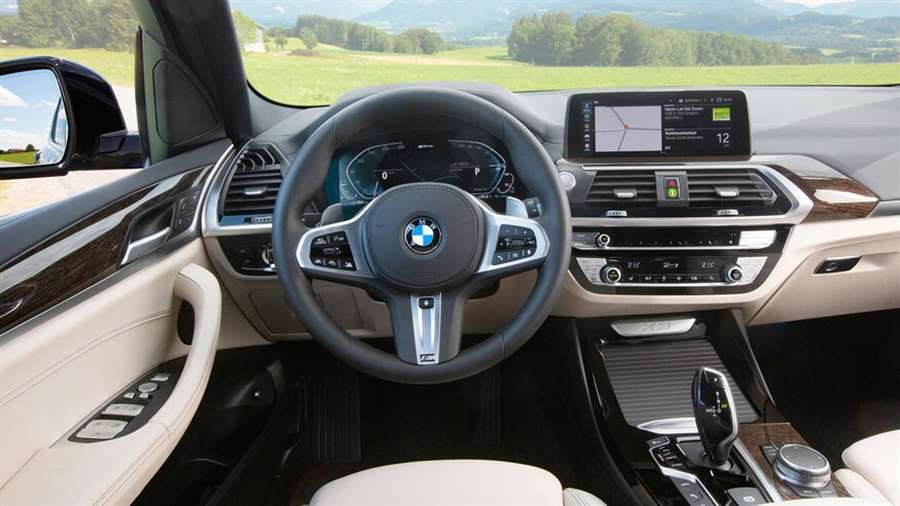
As with most BMWs, fiddling with the drive modes alters the mood of the vehicle substantially. Naturally, there's a fully electric mode that allows fuel-free motoring up to 84 mph; a hybrid mode can remain fully electric to 68 mph, while the EcoPro, adaptive, and sport modes ratchet up the driving fun as in the X3's sisterships.
Is The X3 XDrive30e Any Fun To Drive?
Our test sample was kitted out for peak driving fun, with the M Sport 2 and Dynamic Handling packages and shod in 20-inch Pirelli P Zero summer run-flat tires. As such, it smokes the braking and lateral-g performance of our last X3 xDrive30i (on 19-inch Bridgestone Dueler H/P Sport all-season tires). It out-brakes our long-term M40i, doing 60-0 mph in 110 versus 112 feet, and even manages a bit more max-lateral grip (0.89 to 0.84 g), and that one wore 21-inch Bridgestone Alenza summer tires. Had we been able to perform our figure-eight test in Michigan, it surely would have logged a low-26-second lap. So yes, there is typical car enthusiast fun to be had at the helm. There's also geek-fun to be had paging through the many performance- and economy-oriented screens and displays available in the cluster, the central screen, and the head-up display.
How Does The BMW X3 XDrive30e Compare With Its Rivals?
Sadly, we have no official experience with this X3's obvious plug-in competitors—the similarly sized Audi Q5 55 TFSI e and the Mercedes-Benz GLC 350e—so we're ill-equipped to compare them. The Audi and BMW are rated to tow 4,400 pounds, and the Mercedes can only manage 3,600 if that helps in the elimination process. Otherwise, on paper these two competitors cost more to start with—$52,995 for the Audi and $52,895 for the Benz compared to $49,545 for this X3—but their extra cost buys extra output and economy. Their electrified 2.0-liter drivetrains make more power and torque—362 hp/369 lb-ft for the Audi and 320 hp and 413 lb-ft for the Mercedes—so odds are they'll be quicker. They also get higher EPA ratings: 64/66/65 mpg-e (25/29/27 mpg on gas only) for the Audi and 67/70/68 mpg-e (23/28/25 mpg, gas) for the Mercedes. Those cars boast 2-4 additional miles of electric range, too. Of course, the premium you pay for the PHEV hardware is also steeper, so making the saved fuel costs pay off the premium might require an unreasonable amount of mooched electricity.
Source: motortrend.com
Lexus UX SUV review
"The economical Lexus UX looks and feels great, but falls short on versatility"
The premium compact SUV class is growing rapidly at the moment. Buyers can't get enough of fashionable crossovers such as the BMW X2 and Audi Q2. 'Hybrid' has become something of a buzzword, too, so a hybrid premium compact SUV really ought to be a sales sensation.
This is what Lexus, the upmarket arm of Toyota, hopes for its all-new UX 250h. It's the smallest SUV the company has yet offered, slotting beneath the Lexus NX in the brand's line-up and offering an alternative to its other hybrid model, the more conventionally styled Lexus CT hatchback. It'll also compete against the Jaguar E-Pace and Volvo XC40, while potentially persuading would-be Toyota C-HR buyers to push a little further upmarket.
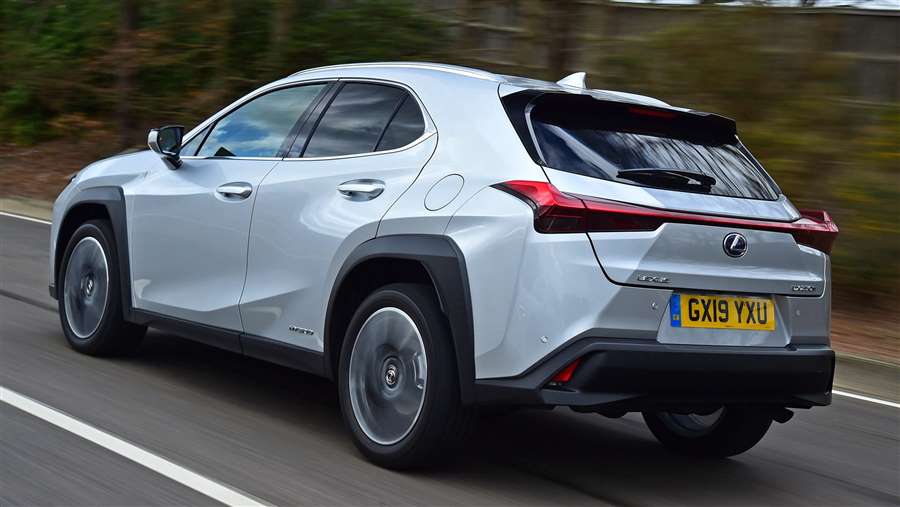
It comes as no surprise that Lexus should opt for hybrid power in its smallest SUV – the larger Lexus RX was something of a pioneer, offering hybrid power since 2004. The technology has since made big leaps forward in fuel-efficiency, though, and Lexus claims some fairly startling economy figures for the smaller, lighter UX. Modest CO2 emissions figures should make the UX an attractive proposition for company-car users, too.
Externally, the Lexus UX wears the brand's trademark 'spindle' grille, but isn't quite as bold and outspoken as the larger Lexus NX. The overall shape has the sleek silhouette of the latest coupe-SUVs, and despite its tough-looking black wheelarch mouldings, the stance is more soft-roader than go-anywhere vehicle.
That streamlined shape is reflected inside, where interior headroom is more saloon than SUV and the driving position is only a little higher than a typical family hatchback. Boot space is rather meagre, too, so this might be a crossover more suitable for couples than larger parties.
Although some may miss the lofty perch that other SUVs can provide, many will enjoy the UX's sporty driving position; there's no doubt it contributes to the driving experience, which feels a little more involving than some rivals. It just goes to show how capable Toyota's TNGA platform – also found under the Toyota Prius hybrid and latest Toyota Corolla – really is. Four-wheel drive is also offered in the UX 250h hybrid, badged E-Four, but we wouldn't recommend this version unless you really need extra traction in winter, because it makes the car less efficient.
Touted as a cutting-edge product at launch, the UX ticks all the usual safety boxes with autonomous emergency braking, lane-departure warning, traffic-sign recognition and automatic headlights. There's a radar cruise-control system, too, with a mode for use in stop-start traffic at up to 18mph.
Lexus proudly occupies the number-one slot in our 2020 Driver Power owner satisfaction survey, even though the brand's three-year/60,000-mile warranty is less generous than Toyota's.
If you'd rather a longer warranty, the Toyota C-HR hybrid remains a less expensive – and slightly more spacious – alternative to the Lexus UX, but many will find the latter's extra style and interior appeal worth the extra outlay. High-mileage private buyers may find conventional diesel-powered rivals, such as the BMW X1 sDrive18d, will be cheaper to run, too.
Lexus UX MPG & CO2
The Lexus UX 250h uses the very latest hybrid technology that Toyota has to offer, having much in common with the latest Toyota Prius. Official WLTP figures span from 50.4 to 53.2mpg for the standard UX and 47mpg for the four-wheel drive version. We managed 50mpg in a test car, despite the big 18-inch alloy wheels included with the F-Sport trim level.
Stick with two-wheel drive and the Lexus UX emits from 120g/km of CO2 with 17-inch wheels fitted and 126g/km with 18-inch alloys. Benefit-in-Kind (BiK) liability for company-car drivers spans from 27 to 28%. Emitting around 135g/km, the four-wheel drive UX sits in a higher BiK band with either size wheels.
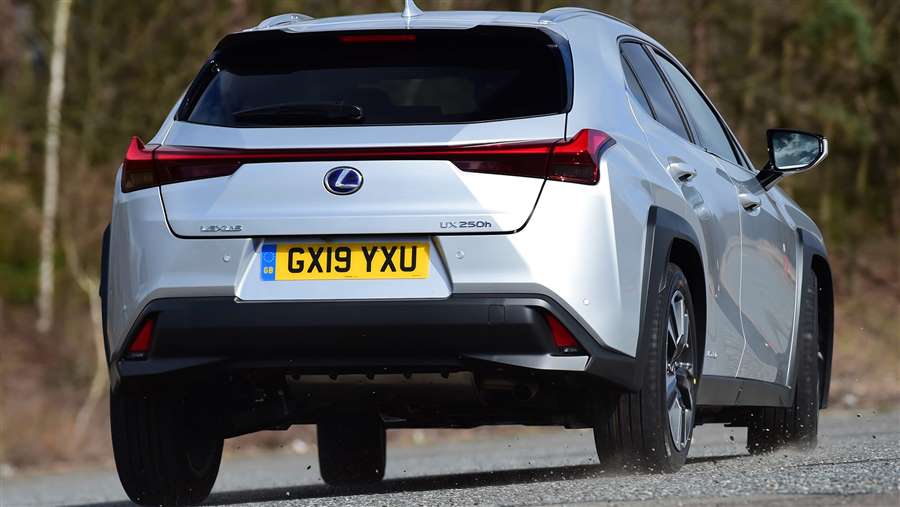
Insurance
The Association of British Insurers has placed the Lexus UX in insurance groups 22 to 26 out of 50, making the Lexus a little more expensive to insure than the cheaper but mechanically related Toyota C-HR hybrid, which occupies insurance group 14 in top-spec Excel form. Meanwhile, the most economical Mercedes GLA is in insurance group 21, while the BMW X1 starts in insurance group 26.
Servicing
Lexus offers fixed-price servicing for all models. Although pricing for the UX has yet to be announced, service schedules are sure to match the pattern of other hybrid models in the range, with a major service every 20,000 miles and an intermediate oil-change service every 10,000 miles.
Warranty
Lexus' three-year/60,000 mile warranty closely matches that provided by Volkswagen and Audi, but falls behind the three-year/unlimited-mileage warranties of Mercedes and BMW. It also lags behind that provided by Toyota, which lasts for five years or 100,000 miles. Lexus can provide an extended warranty, though, keeping you covered once your original policy's age or mileage limit is breached. It's also worth noting that the hybrid powertrain comes with a five-year/60,000 mile warranty for extra peace of mind.
The Lexus UX 250h uses a platform known as Toyota New Generation Architecture (TNGA), which underpins a range of cars as diverse as the Toyota Prius, Toyota Corolla and Toyota C-HR. That fact might not scream 'sporty', but prospective Lexus UX purchasers are in for a pleasant surprise.
Sitting in a driving position somewhat lower than that of most compact SUVs, you're well placed to get the most out of how the Lexus handles. That's no empty gesture, either, because the UX really does offer enough driving involvement to be a pleasure to drive. The steering is accurate and has a pleasingly weighty feel, while strong grip helps confidence in sharp corners.
Lexus claims to have gone to some lengths to make the UX feel good to drive, taking the trouble to mount the steering rack directly to the chassis in an effort to reduce flex and vibration, and these efforts have definitely paid off; the UX is more fun to drive than the Audi Q2 and runs the BMW X2 close. What's more, the car's impressive resistance to lean in corners doesn't come at the expense of a hard ride, at least not with the optional adaptive damping system fitted. We've yet to evaluate how the standard suspension deals with road imperfections.
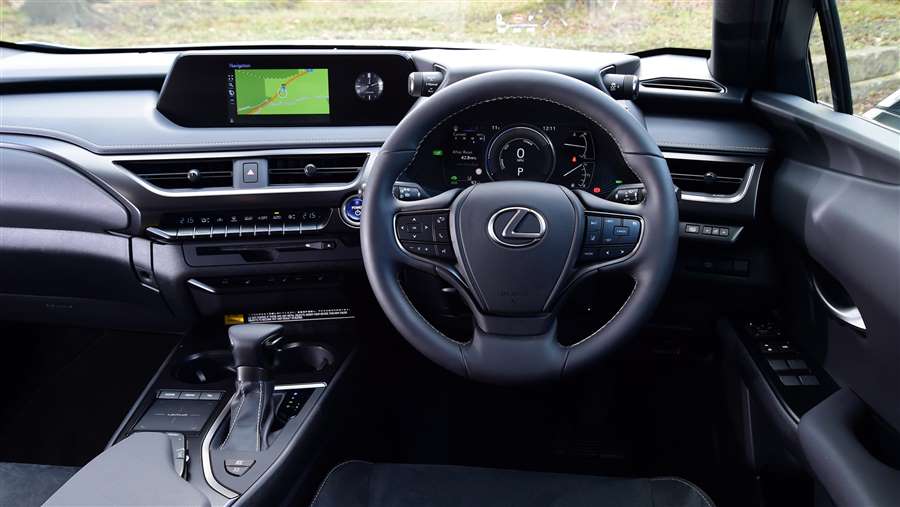
The UX is available with either front-wheel drive or 'E-Four' all-wheel drive, but the latter is intended more to maximise traction on poor roads and in adverse weather conditions than to bestow the UX with real all-terrain ability. For most buyers, we'd recommend saving the £1,200 or putting it towards a set of winter tyres for the front-wheel drive version.
Lexus UX hybrid engine
Only one engine is offered for the Lexus UX – the 250h. It's billed as a 'self-charging' hybrid, but that tag is little more than a positive spin on the fact that it has no plug-in facility. As a result, the UX can only move under all-electric power at moderate speeds, but it does bring a welcome degree of quietness in urban traffic.
The four-cylinder 2.0-litre petrol engine produces 144bhp and twin electric motors contribute 108bhp, making 0-62mph possible in 8.5 seconds. It feels quicker off the mark than the Audi Q2 fitted with a 1.5-litre turbo and driving is effortless thanks to a CVT automatic gearbox that proves smooth and seamless in operation. Unusually, the paddles either side of the steering wheel aren't for changing gear, but for setting the rate of regenerative braking. This system uses energy released during deceleration to help charge the UX's hybrid battery.
The E-Four four-wheel drive version gets an extra motor for the rear wheels, providing up to 7bhp and 55Nm of pulling power but also adding 60kg of weight. In most driving situations it feels identical to the front-wheel drive version, with enough electric assistance to prevent the petrol engine from feeling overworked. However, with less weight, the standard UX can run in EV mode more often, so unless you park on a slippery field or track every day, the benefits are marginal.
Interior & comfort
The Lexus UX looks and feels great inside
The Lexus UX is generally smooth and relaxing to travel in. At higher cruising speeds, its slippery shape helps to keep wind noise at bay, and occupants will find tyre noise far more intrusive than any other mechanical sound. The clever (optional) active damping system is effective at ironing out road bumps, but we've yet to try the standard suspension.
Lexus has established an enviable reputation for interior design and quality, and the UX doesn't disappoint. The materials used are from the top drawer, and the layout is distinctive and pleasing to look at. Enthusiasts might even spot a few visual influences from the range-topping Lexus LC sports coupe.
Lexus UX dashboard
The UX's dashboard sweeps around the driver, who's placed right in the centre of the action. The instrument cluster is a little smaller than that of some rivals, but its seven-inch digital display is clear and easy to understand and can be configured to your taste.
Lexus UX interior19
Major features, such as the climate-control system, are easy to use thanks to piano-style buttons in the centre console. However, we remain unconvinced by the touchpad system that Lexus employs for its infotainment systems. It's fiddly to use when at a standstill, and worse when you're on the move. There's no Apple CarPlay or Android Auto on board, either, but the wide central touchscreen looks great.
Equipment
The UX is available in three trim levels. The entry-level model is simply the UX, followed by F Sport and top-spec Takumi.
The UX comes with sat nav, dual-zone air-conditioning and 17-inch alloy wheels, along with compatibility with Android Auto and Apple CarPlay. The F Sport has sporty styling extras to give it a more muscular appearance, as well as 18-inch alloy wheels, sports seats, pedals and steering wheel. The trim level also includes heating for the seats and steering wheel, plus tinted rear windows. There's also the option of Active Sound Control (ASC), which "generates the aural effect of up and downshifts like those of a geared automatic transmission". In common with other cars that offer a digitally synthesised engine noise to increase aural stimulation, the F-Sport is available with Sonic Interaction Design (SID). It allows you to tailor the 'engine sound' when Sport S+ mode is engaged.
The Takumi version of the UX features leather upholstery, ventilated seats, a Mark Levinson 13-speaker sound system, a 10-inch multimedia display, 360-degree camera, driver’s head-up display, sunroof, blind spot monitor and rear cross traffic alert.
Options
Five option packs are available for the UX. The Premium Pack (available for UX and F Sport trims) includes 18-inch alloy wheels, front and rear parking sensors, rear privacy glass, integrated heating in the front seats and steering wheel and an auto-dimming rear-view mirror.
Taking luxury specification to an even higher level, the Premium Plus Pack adds leather upholstery, smart entry, a powered tailgate and illuminated entry system. F Sport buyers also get a 10-inch multimedia display and power-adjustable steering wheel as part of the pack.
Introduced for 2020, there's also a Premium Pro Pack. This includes the kit in the Premium Plus Pack and adds blind-spot monitoring, rear cross traffic alerts, a head-up display, adaptive LED headlights, a 13-speaker Mark Levinson stereo, wireless smartphone charging and power adjustable seats.
The Tech & Safety Pack equips the car with a blind spot monitor, rear cross traffic with auto brake, triple-eye LED headlights, a driver’s head-up display and a wireless charging tray for smartphones. The F Sport model also gets adaptive suspension as part of this pack, which provides automatic, independent, damping force at each wheel in response to driver inputs and road conditions.
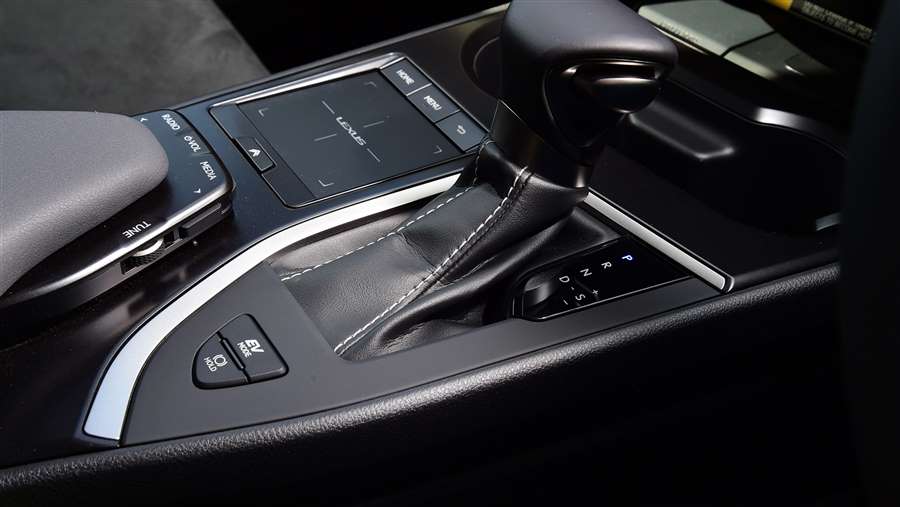
The UX model is available with a Tech & Sound Pack that equips the vehicle with the Mark Levinson audio system, head-up display, wireless charger and power-adjustable front seats and steering wheel.
The F Sport model is available with a Takumi Pack, which includes everything in the Premium Plus and Tech & Safety Packs, together with front seat ventilation, the Mark Levinson audio system, a sunroof and 360-degree camera. If you want to inject some extra flair, there's also a new ‘Cobalt’ blue trim colour for 2020, as well as an ‘F White’ colour scheme with contrasting black and white leather for the seats and dashboard.
Practicality & boot space
The Lexus UX is reasonably spacious for passengers, but boot space is tight
The restrictions enforced by the Lexus UX's compact overall dimensions presented its designers with a major challenge when it came to interior packaging, and the sleek crossover is further hamstrung by its low, curvaceous roofline. As a result, although space inside is adequate, there's no mistaking the Lexus UX for a versatile family car.
Lexus UX interior space & storage
Front-seat passengers get by far the best deal inside the UX, where the wraparound dashboard gives the driver a cocooned feeling without claustrophobia setting in. There's more headroom than you might expect, thanks largely to the low-set seats.
The same is true in the back, but the narrow windows don't let a great deal of light in. It means rear-seat passengers get the impression of there being less space than there actually is, and most will actually find knee and headroom adequate.
Boot space
With a high floor, boot space is just 320 litres - a small size for the class and 150 litres less than the BMW X2 offers. Things get even worse with four-wheel drive fitted, because the extra mechanical hardware reduces boot space to 283 litres - less than you get in a Ford Fiesta.
The rear seats fold with a 60:40 split should you need to expand the boot without passengers on board, but the steeply raked rear windscreen puts paid to the notion of carrying bulky items.
Source: carbayer.com
2022 Volkswagen Taos Previews an Important New Engine for VW
An early prototype drive in VW’s upcoming Taos subcompact ute reveal its new Miller-capable 1.5-liter turbo-four should enliven the low end of VW’s lineup.
Oxnard, California, is an overlooked American automotive nerve center. The city surrounds Port Hueneme, where massive car-carrying ships disgorge vehicles for at least 18 manufacturers. It's also the port from which Tesla vehicles leave for export to Asia. That's led some of the carmakers to establish engineering and design facilities in the area. BMW has one there. And now, so does Volkswagen of America—a five-acre campus on Del Norte Boulevard, across from a Shell station with an integrated Subway sandwich shop.
So, while VW was dazzling the world's assembled press in September with the all-electric ID.4 small crossover, it simultaneously invited a select group of marginalized journalists to Oxnard to tour the company's facility, sample the company's upcoming 2022 Taos—a conventionally powered compact crossover—and do a deep dive into its new 1.5-liter turbocharged, four-cylinder engine.
Nearly a foot shorter, the Taos is more compact than the Tiguan, sized to compete in the red-hot twerp-ute market, a burgeoning segment that includes the trendy Nissan Kicks, stalwart Honda HR-V, sweet Mazda CX-3, and lackluster Ford EcoSport. It's an important genre, not only because of its insane sales growth, but because cheap crossovers are often the entry point for young customers buying into a brand for the first time. And that's that for the business school marketing lesson.
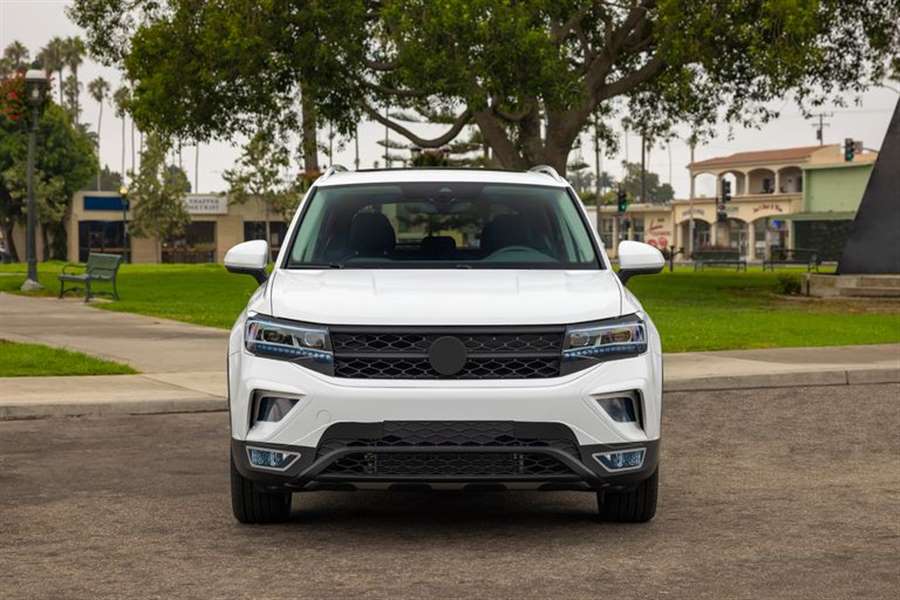
The pre-pre-production prototypes on hand were lightly camouflaged to avoid startling observers psychologically unprepared to contend with the profound visual impact of a small SUV that looks like a dehydrated Tiguan. On the outside they were wrapped in white vinyl, with subtle graphic elements taped to the headlights and covering the logos. On the inside, a fuzzy dash pad covered most everything but the tachometer and speedometer. That included the air vents, and it was a pretty hot day.
The drive itself would consist of a 30-or-so-mile lap through Oxnard and neighboring Camarillo and back to VW's campus. And during this tour of verdant, culturally diverse Ventura County, we would be shadowed by a VW representative so that if something went wrong or we tried to keep the prototype for ourselves, they could do … something. Maybe our proctor had a roll of duct tape with him. Or a shotgun. We obeyed the rules.
The featured attraction here was truly the new 1.5-liter turbo engine. It's destined to replace the 1.4-liter turbo four that's currently the standard powerplant in the United States-market Jetta and Golf. The 1.5-liter has a slight increase in piston bore diameter to reach its new displacement, but the big change is the use of some technology from the EA888 turbocharged 2.0-liter inline-four found in the Tiguan. The new engine will be capable of operating on Volkswagen's modified Miller-cycle combustion under light load conditions, which they've named the Budak cycle after its developer. When operating on Budak, the intake valve closes earlier that it would during normal operation, thus reducing the amount of fuel and oxygen drawn in and returning more efficiency. The 1.5-liter will also use a variable vane turbocharger to increase its responsiveness.
VW rates the new engine at 158 horsepower and 184 pound-feet of torque, which will be the sole engine in the Taos. That vaults right over competitors like the 141-hp Nissan Rogue Sport, 147-hp 2.0-liter Kia Soul, and 148-hp Mazda CX-3. And the VW will push that advantage by backing the engine with an eight-speed conventional automatic transmission in front-drive versions of the Taos. All-wheel-drive versions will get the familiar seven-speed dual-clutch transmission. The new 1.5-liter will be built at VW's engine plant in Silao, Mexico, which opened in 2013. And the Taos, designed for the North American market, will also be built in Mexico.
The route chosen for us by VW was flat and not curvy. There was a short blast southward on Highway 101, but no roads were challenging. There were several opportunities along the way, however, to stop and buy strawberries freshly picked from the coastal plain's fields.
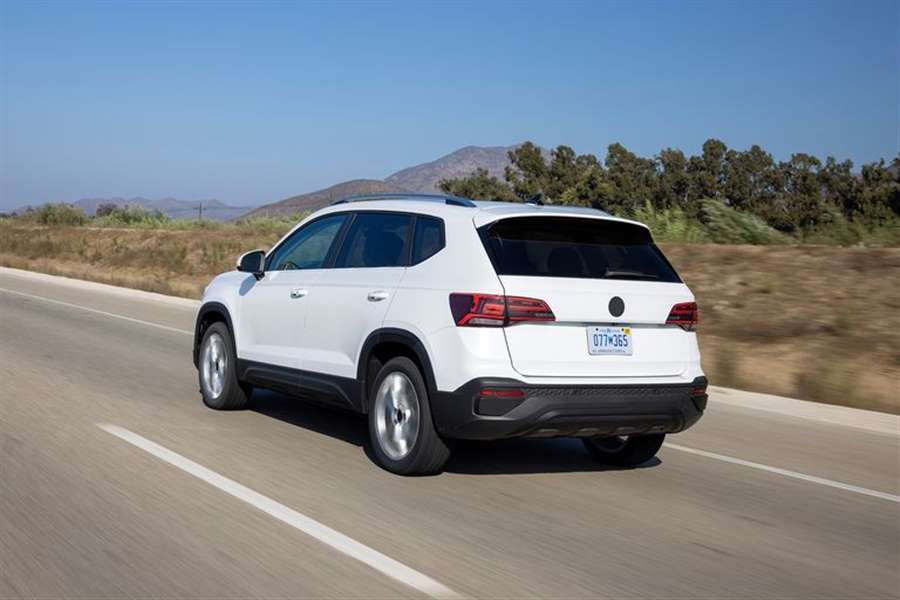
As an evaluation of the Taos, this was just a bit of early exposure, severely limited in its usefulness. But the engine does seem to make excellent low-end grunt, the transmission didn't do anything untoward, and the suspension didn't collapse riding along smooth pavement. The details that matter were covered up inside, so there's no way to positively say how well the interior is laid out. Naturally, a big-ass touchscreen is likely destined for the dashboard's center because everything now has a big-ass touchscreen.
The front wheel-drive Taos will make its official debut this month and is scheduled to hit dealerships around the middle of next year. And since it's destined to compete in one of the most price-conscious segments of the market, there's no reason to expect it to cost any more or much less than other cute-overs. So, figure it'll start at around $20,000 at the bottom and knock on $30K at the top of the range.
Back at the facility, there were Volkswagen products from around the world on hand for all sorts of testing. There were even a couple of prototype ID.4s, with technicians carefully peeling away their camouflage after that day's public debut of the car. There's something going on here.
That something is an inflection point, one where manufacturers are still developing vehicles powered by internal combustion engines while simultaneously prepping for the electrified future consumers will either want or will have forced upon them. Volkswagen was caught with its pants down in the diesel scandal and can't afford to screw up in the immediate future. So, right now it's wearing multiple pairs of pants. Jeans and chinos. Dockers and slacks. Snow pants and baggy shorts.
As the day was dying off, the assembled litter of journalists were led to a conference room set up with appropriate social distancing. There we enjoyed the comedy stylings of Johan de Nysschen, the still new senior executive of Volkswagen Group North America, who is this generation's Bob Lutz tinged with a hint of John Force. He likely said something profound and hilarious, but I really just wanted to write "comedy stylings."
It turns out that VW doesn't use Port Hueneme as a port of entry for its vehicles. So, why the company decided to plop down its latest facility in Oxnard is a mystery. Maybe it's because Oxnard is where the action is. Or maybe they just wanted to build somewhere with easy access to a Subway.
Source: caranddriver.com
Lexus LC Convertible reviews
Luxury convertibles will never be big sellers, but Lexus intends the LC Convertible to be even more exclusive than most. Only planning to sell a few hundred a year should mean this car remains seriously desirable – that’s if its eye-catching looks and the allure of a powerful and characterful V8 engine aren’t enough to do that.
But being a Lexus, the LC Convertible has to be many things other than desirable. Traditional Lexus owners won’t accept anything half-baked; this is a car that has to be screwed together with more care than your average IKEA bookshelf, and one that has to be totally, completely painless to own.
Lexus LC Coupe review
As for rivals, this car can count everything from the Porsche 911 Cabriolet to the Mercedes S-Class Convertible – though at this end of the market, people are much more likely to be buying with their hearts than their heads, and while boot space or miles per gallon do matter, it’s character, presence and enjoyment that will convince these buyers.
Fantastic looks with folding fabric roof
It would seem folding hard-tops have almost had their day, and most premium convertibles – the LC Convertible included – now opt for a fabric hood instead. This has several benefits and in this case it’s speed of operation, weight distribution and looks that all benefit.
With switches hidden away carefully under the interior palm rest, raising or lowering the roof is done at the touch of a button. It takes just 15 seconds to raise or lower, and can be done at speeds of up to 31mph – so you can raise or lower to your hearts content while driving around town, in accordance with any sudden rain storms that might pass your way.
The lightweight roof mechanism means more of the LC’s weight is lower down, lowering the centre of gravity which improves cornering and comfort. Better yet, Lexus has worked hard on making sure that the roof is attractive even when it’s raised – not always a given with some cars, which can look rather tent-like.

Only one engine option – but it’s a great one
While the standard LC Coupe is offered with a petrol/electric hybrid option (badged LC 500h) the Convertible doesn’t get this – the weight distribution would be thrown off too much by the heavy battery pack. Instead, Lexus only offers it in what it calls LC 500 form – that means a whacking great 5.0-litre V8 petrol with no hybrid assistance whatsoever.
It’s as old-school a combination as you can find these days. The engine puts its power to the rear wheels, and is unencumbered by turbocharger or supercharger. This means it feels purer – the response is beautifully crisp, and it only gets better as the revs climb. In fact, the engine’s full power isn’t accessed until you hit 7,100rpm.
The engine’s paired up to a ten-speed automatic transmission and rear-wheel drive, which provide effortless cruising when needed for long motorway slogs and a great deal of fun for the twisty bits in between.
Impressive interior – but not exactly spacious
You sit very low in the LC, in large, comfortable sports seats with loads of adjustment. And once inside, you’re surrounded by an interior only Lexus could have designed – with Japanese influence in its surfacing, and thought paid to its construction.
Though the LC Convertible does have rear seats, they’re not really intended to be used for passengers. Most owners will opt to see them as additional luggage space – useful, especially as the LC Convertible’s boot is smaller than most city cars.
Naturally there is plenty of luxury equipment, and the LC Convertible has been launched alongside a minor model change for the LC line as a whole – which means that both Coupe and Convertible now come with Apple CarPlay and Android Auto connectivity, a real boon for those who find Lexus’ aging and labyrinthine infotainment system worth avoiding.
Practicality
The Lexus LC Convertible is a four-seater in theory, but it’s at its best when used as a two-seat roadster. The two front seats are excellent – they’re set incredibly low to the ground, making for a really comfortable yet focussed driving position with plenty of adjustability.
Lexus seats are typically a strong point and though the larger motorist might feel as though their bottom is a little pinched by the side bolsters, for most it’s effortlessly comfortable.
The driver certainly feels ensconced, surrounded by high sills to the windows – which doesn’t do much for visibility but certainly makes it feel more like the cockpit of a fighter jet.
The two rear seats… well, they exist, but ask a six-foot adult to sit back there and they’ll laugh. However, there are two Isofix child seat mounting points back there, making it possible that you could bring children along with you. You’ll need to be very mobile to belt them in, however, and we can’t imagine big, bulky baby seats will fit very easily either.
Boot
The rear seats are better treated as an extension of the boot space, though there’s no way to fold them down to allow for longer loads. At 149 litres in capacity, the LC Convertible’s boot is similar in size to the front trunk of a Porsche 911 Cabriolet. It’s rather wider and shallower, though – useful for fitting in a couple of carryon suitcases or several soft bags.
Safety
Tons of safety kit
Hasn’t yet been tested by Euro NCAP
Lexus has a strong record for crash safety
Neither the LC Convertible nor its coupe sibling have been tested by Euro NCAP for crash safety, but Lexus’ reputation for solidity and assurance extends to its safety record. Every Lexus model ever tested by Euro NCAP has received a full five-star rating, with the most recent ES saloon and UX SUV posting really impressive scores.
In terms of safety equipment, the LC Convertible is fully loaded regardless of which grade you choose. All models come with what Lexus terms the ‘Safety System +’ – a package of aids that includes adaptive cruise control, autonomous emergency braking, traffic sign recognition, lane-keep assist and automatic high beam headlights.
There are also eight airbags and blind-spot monitoring, plus pop-up bars that shield the occupants heads should the worst happen and the car rolls onto its roof (or lack thereof).
Interior
As befits a Lexus, the LC Convertible has an interior that’s distinctive in style. The overarching factor is how beautifully it seems to have been built – another Lexus hallmark. There are no rattles or creaks in here, no matter where you search for them, and material quality is high even in places you’re not likely to touch. Almost every surface is either leather or dense, expensive-feeling plastic.

There’s a high-set centre console containing a tiered central stack – this holds climate controls and a large single air vent for the driver, while lower down there are nicely weighted controls for the stereo and a touchpad for the infotainment system.
Further up there’s a vertically-orientated panel that features a textured finish to keep things interesting, as well as a digital gauge cluster. Like all high-end Lexuses, this actually features a moving, physical bezel – depending on what you’re doing, it’ll slide over to make more room for sub-menus and controls. It’s daft, but high-end features intended to delight often are. The cluster itself is easy to read, though looking a little low-res next to the ultra-sharp panels fitted to cars such as the Audi R8.
There are no such complaints for the central infotainment screen, which is ten inches across and looks bright, colourful and sharp. Lexus’ own interface offers everything from sat-nav to trip data, but it’s confusing and difficult to navigate the menus – especially since it’s not a touchscreen.
Instead, Lexus demands you use the touch-sensitive pad by the gearlever to move a virtual pointer, like you would on a computer. It’s slicker than past efforts, but still torturous to use when inputting an address, for example.
Luckily, Lexus has finally bowed to public pressure and installed Apple CarPlay and Android Auto in the LC Convertible. These allow you to replace Lexus’ interface with one pulled directly from your smartphone. We found Android Auto worked well, and while you still needed to navigate with the pointer it was much easier simply to use Google’s voice control to accomplish most tasks.
There are two USB ports for charging and connecting phones, and they’re situated underneath the central armrest. Pull this armrest back a little and you’ll be able to flip up the palmrest ahead of it – underneath, cleverly concealed, you’ll find the controls for the roof.
Other storage space is somewhat limited, with a shallow central bin and thin glovebox. The door bins are adequately sized, though, and there’s a big cupholder conveniently situated ahead of the gearlever. Passengers also get a grab handle on the centre console, to keep them steady when the driver’s having a little fun.
Comfort
Low-speed ride a little choppy
Irons out every bump when moving faster, though
Seats are excellent
With large wheels and the stiff suspension of the Sport+ model we tested, the Lexus LC Convertible can be a little unforgiving when driving around town. It’s far from unbearable, but those hoping for a cushioned ride around the city should probably look towards something like a Mercedes-Benz E-Class Convertible.
2020 Lexus LC Convertible - front trackingEnlarge0videoEnlarge14photo
When moving faster, that becomes much less of an issue – at the national speed limit, the LC floats over bumps almost as if they weren’t there. Absorption of road imperfections is aided by the excellent and supportive seats.
Source: parkers.co.uk
2021 Toyota Sienna Review: A Strange Brew
The verdict: The redesigned 2021 Sienna is Toyota’s gambit to avoid a cookie-cutter minivan at all costs. It’s refreshing in some ways, but other aspects will make you wish the automaker had stuck to a more conventional approach.
Versus the competition: As you might expect for any redesigned minivan, the new Sienna has more family-friendly features than you can shake a pogo stick at. Less characteristic of the class, it boasts a risk-taking interior and a hybrid-only powertrain — qualities that could turn away as many shoppers as they attract.
With styling inspired by Japan’s bullet trains, the Sienna courts minor controversy by way of a gaping lower grille, but Toyota’s been pushing a big grille since it refreshed the minivan late in the prior generation. On sale in November, the 2021 Sienna model comes in five trim levels: LE, XLE, XSE, Limited and Platinum, all with a four-cylinder hybrid powertrain and front- or all-wheel drive. We evaluated two preproduction AWD examples: an LE and XSE.
Hybrid Only
Toyota’s decision to offer the Sienna as a gas-electric hybrid comes as little surprise given the automaker announced plans in 2017 to offer electrified variants across its entire lineup by roughly 2025. More curious is the decision to offer the Sienna only as a hybrid, in this case with a 2.5-liter four-cylinder plus an electric drive motor. Total output is 245 horsepower, with another electric motor at the rear axle facilitating AWD if equipped. Toyota claims the same 3,500-pound towing capacity as before, plus EPA-estimated combined mileage of 36 mpg (FWD) or 35 mpg (AWD). The agency has yet to publish figures, but it’s safe to say the 2021 Sienna’s fuel efficiency will smoke that of the outgoing Sienna, which in its final years offered only a non-hybrid V-6.
What’s also clear: The new Sienna loses a step to the outgoing model, which made 296 hp, though the deficit isn’t as bad as it looks on paper. Step on the gas, and the hybrid drivetrain’s electric motors lend immediate oomph from a stop, but engine power then raises revs noisily and a little out of sync with your right foot. Power comes soon enough, but maximum acceleration is a bit slower than the old Sienna. The new drivetrain seems optimized for power transitions when you’re already in motion; go from some pedal to more pedal, and power comes with little delay.
Ride and Handling: Base Is Best
Ride quality depends largely on what you get. Equipped with 17-inch wheels with P235/65R17 tires, the Sienna LE absorbs bumps with clean, high-quality composure, though some roads can produce slight, lateral body movement. The XSE AWD pairs a sport-tuned suspension with 18-inch wheels and P235/60R18 tires, meanwhile, and the result is firm. Shock absorption feels altogether less sophisticated, with harsh impacts and more jittery body movement. Front-drive XSEs have 20-inch wheels with even lower-profile tires (P235/50R20s) that may be even more harsh.
Little payoff comes on the handling front, as the LE’s dynamics seem just as good as the XSE’s without the undue firmness. With the battery pack behind the front axle, under the front seats, the Sienna maintains steadfast balance hustling around sweeping corners. It steers with light effort and direct response, though feedback is numb enough to allow excessive wandering on center — especially in the LE, which lacks the XSE’s sport-tuned steering. The XSE’s sport suspension allows slightly less body roll, but the regular setup still corners reasonably flat for what this is. And the tires on both minivans (Bridgestone Turanzas on the XSE and Falken Ziex on the LE, both all-seasons) exhibit good lateral grip.
Unconventional Interior
Draped with hulking shelves and a wide bridge-style center console, this Sienna sports the most left-field interior for a Toyota minivan in the U.S. since the Previa. Gone is the old Sienna’s drop-down center console and floor-level space to throw a medium-size purse, a layout still offered in the rival Honda Odyssey and certain variants of Chrysler’s Voyager and Pacifica siblings. In its place is a massive flow-through console that bridges the dashboard and center armrest. Underneath it is a large storage area with … enough space to throw a medium-size purse. It’s a wide setup overall, but so is the driver’s berth; even for long-legged adults, the console shouldn’t clip your knees. If it does, Toyota pads the outboard section to minimize discomfort.
Cabin quality in our preproduction test cars was all over the map, with harsh, cheap-looking finishes over much of the dashboard and insufficient padding in areas like the upper doors. The LE has a decent grade of cloth upholstery, but the XLE and XSE have SofTex vinyl, which (at least in our XSE example) imparts a rubbery industrial feel; Limited and Platinum models get leather. Toyota routed hardware for the mechanical gear selector down the front side of the console bin — a nice bit of packaging enabling the bridge-style console that usually requires the electronic selectors we universally dislike — but the selector’s rickety operation feels like it’s falling apart. Some of that might improve by production time, but this isn’t the first Toyota we’ve driven to have a shaky gear selector.
Among the console compartments, dashboard shelves and umpteen door pockets, the Sienna still has plentiful storage space. It also boasts decent forward visibility thanks to door-mounted mirrors and thin A-pillars. Rear visibility is less ideal, with bulky second-row head restraints blocking over-the-shoulder sightlines and a backup camera in dire need of better resolution. Higher trim levels offer a camera-based rearview mirror and 360-degree camera system, which we did not evaluate.
A 4.2-inch gauge display and 9-inch touchscreen, the latter with Apple CarPlay and Android Auto, are standard. Although wireless smartphone charging is optional, both smartphone integrations still require physical cords, not the wireless connectivity gaining traction industrywide. Spaced across all three rows are seven standard USB ports, including three of the newer USB-C variety. Options include a 7-inch gauge display, two household-style AC outlets, an 11.6-inch rear entertainment system and head-up display.
Winsome Seating …
LE and XLE models seat eight courtesy of a three-position bench with a removable middle seat in the second row. Optional on the XLE and standard on higher trims are second-row captain’s chairs, which reduce capacity to seven. In any case, space is plentiful all around, though accessing the third row from either side remains a cumbersome, multistep process. Fortunately, the second-row seats have exceptional sliding range — about a foot (in a seated position, farther for access) in base models or roughly double that with an optional extended-slide feature — to find a position that lends adult-friendly legroom in both rows.
Typical of a minivan, the Sienna’s third row folds backward into a floor cavity. Stow it there, and the available extended-slide captain’s chairs go nearly as far back as the third row once sat, with enough legroom ahead to host a soccer match. Like the outgoing Sienna, the 2021 model offers pop-up leg rests for passengers to lounge while the van is stopped, but these seats slide 10 inches farther than before, Toyota officials told us.
… Lose Some Cargo
Alas, the versatile seating arrangement comes at significant expense to cargo space. Regardless of configuration, the second-row seats neither fold down nor come out, provisions the Odyssey and Pacifica offer. Toyota says that’s because of new airbags mounted in the second-row seats. Curtain airbags are also standard, and the second row in plenty of cars — including the outgoing Sienna — fared well in side impact crash tests with curtains alone. For the 2021 Sienna, Toyota says the extended-slide seats necessitated the extra pair of airbags.
“Adding airbags to the seats allowed us to include the super-long slide,” said Nicky Hamila, a spokesperson for the automaker. “That would only be possible with airbags in the seats that travel with the seat and [protect] the occupant in every position.”
Still, the explanation doesn’t justify why chairs without the extended-slide feature still have the extra airbags and no removability. In any case, maximizing cargo room requires locking the second-row chairs into a collapsed forward position, similar to a provision in the old Sienna. But for maximum room, the old chairs were fully removable. These are not, and the seatbacks lean forward but don’t fold horizontal to maximize usable cargo depth. Toyota says the new Sienna can still fit 4-by-8-foot sheets of plywood at an angle from floor to seatback, but the setup nonetheless reduces roughly 8 feet of potential cargo depth at floor level down to about 6 feet with the seats collapsed forward, by our measuring tape. In other words, if you need to transport bulky furniture, the non-removable seats reduce maximum cargo room by about a quarter.
Behind the second row, cargo specs are relatively more competitive. With the XSE’s third row folded into the floor and its extended-slide second row at the midpoint of its sliding range — a realistic comparison with other three-row vehicles, which universally have much less sliding range — we measured 44.6 cubic feet of cargo room behind it. (We also measured the space with the chairs positioned all the way back, and the volume behind them was 32.6 cubic feet.) The first figure is competitive: We logged 41.6 cubic feet behind the second row in a 2021 Honda Odyssey, for example. It also underlines the sheer packaging efficiency of minivans at large. We measured 41.8 cubic feet behind the second row of a 2021 Chevrolet Suburban, a full-size SUV that’s nearly 2 feet longer.
Behind the third row, we measured 21.7 cubic feet of volume in the Sienna. That’s competitive with our measurements for the Odyssey (21.1 cubic feet) and, for that matter, the Suburban (23.0 cubic feet). Of note, our Sienna XLE lacked an optional spare tire; getting one would eliminate a wall cubby in back, subtracting about 1 cubic foot from our measurement.
Safety
Third-party crash tests have yet to be published for the 2021 Sienna as of this writing. Besides the aforementioned airbags — which make for 10 in total — the Sienna has an impressive roster of crash-avoidance technology, including full-spectrum automatic emergency braking with pedestrian detection, lane departure alert with steering assist and a blind spot warning system. On the driver-assist front, hands-on lane-centering steering and adaptive cruise control work all the way down to a stop; both are also standard. For parents with smaller children, a rear-seat reminder employs door sequencing logic, while the second and third rows have two or three sets of Latch anchors apiece, depending on trim.
Features and Pricing
The Sienna’s base price jumps some $3,000, but that’s because the outgoing model offered a budget-priced L grade that’s now discontinued. The LE starts just north of $35,500 with destination — a little steep for the class — but comes well equipped. Standard features include dual power sliding doors, tri-zone automatic climate control, one-touch power windows all around, a power driver’s seat, cloth upholstery, second-row sunshades and the full-fledged multimedia system.
At the other end, a loaded Sienna Platinum AWD tops out in the mid-$50,000s. That’s a few thousand more than the outgoing Sienna, though it’s a competitive — if eye-watering — price for an AWD minivan. Additional features en route to that price include vinyl or leather upholstery, a hands-free power liftgate, the rear entertainment system, JBL premium audio, heated and ventilated seats with dual power adjustments (though no height adjustment for the passenger), and heated second-row seats. Options uncommon to the class include quad-zone climate control and a power-adjustable steering column. On the flip side, there are no immediate plans to offer a panoramic moonroof or camera system to monitor passengers, two features offered by some rivals.
Toyota also plans to offer an onboard vacuum cleaner and refrigerator at some point. Officials said both features won’t be available at launch but are coming later on; however, they declined to provide a timeframe beyond that.
Should You Buy One?
Minivans have long thrown a smorgasbord of features at family shoppers, and the 2021 Sienna serves up as much as the rest of them. But its qualities feel a little more niche than before. If anything, the fourth-gen Sienna seems ready for a contingent of fastidious fans, even if other audiences shrug it off as something not mainstream enough. Minivan shoppers should add it to the list, at minimum because that list is so short. Whether you buy one will depend on whether you find Toyota’s new direction welcome or just plain odd.
Cars.com’s Editorial department is your source for automotive news and reviews. In line with Cars.com’s long-standing ethics policy, editors and reviewers don’t accept gifts or free trips from automakers. The Editorial department is independent of Cars.com’s advertising, sales and sponsored content departments.
Source: cars.com
Mercedes-AMG E 53 2021 Launched With 423BHP
Mercedes has unveiled an updated version of its entry-level AMG E 53 performance saloon, hot on the heels of the facelifted standard E-Class range. The brand’s updated rival for the Audi S6 is on sale in the UK now, with prices starting from £64,750 for the saloon and £66,750 for the estate.
The updated AMG E 53 4MATIC+’s styling tweaks mirror those of the standard E-Class range, albeit with a more hardcore appearance. Up front, there’s a new radiator grille which mimics the design of the AMG GT Coupe’s – and at the rear, there’s an aggressive new diffuser which houses a quad-exit exhaust system.
The E 53 is available in a choice of two trim levels. The base model features 19-inch twin-five-spoke AMG alloy wheels, a 360-degree parking camera, keyless go and AMG-branded brake calipers. Inside, buyers get a pair of leather-trimmed sports seats, carbon-fibre trim and Mercedes’s 12.3-inch dual-screen infotainment system.
The E 53’s infotainment set-up also includes AMG-specific functions, such as a lap timer, telemetry settings and track mapping. There’s a new flat-bottomed steering wheel, which is similar in design to the rest of the range, but is fitted with a pair of AMG buttons to adjust the car’s driving modes.
The more lavishly equipped AMG E 53 Night Edition Premium Plus is priced from £68,250 and adds a set of matte-black 20-inch alloy wheels, a panoramic glass sunroof, privacy glass, gloss-black window surrounds and an improved 13-speaker Burmester sound system.
Both E53s are powered by a turbocharged 3.0-litre straight-six petrol engine, which is supported by a 48-volt mild-hybrid system. Combined, the unit has an output of 423bhp and 520Nm of torque which, thanks in part to the car’s four-wheel drive system, is enough for a 0–62mph time of 4.5 seconds and a top speed of 155mph.
Like all Mercedes-AMG models, the E 53 gets a host of extra chassis technology, including adaptive dampers, a sophisticated five-stage traction control system, uprated disc brakes, dynamic engine mounts and a limited-slip differential for the rear axle. Read more > https://mercedes-world.com/e-class/mercedes-amg-e-53-launched
Source: mercedes-world.com

